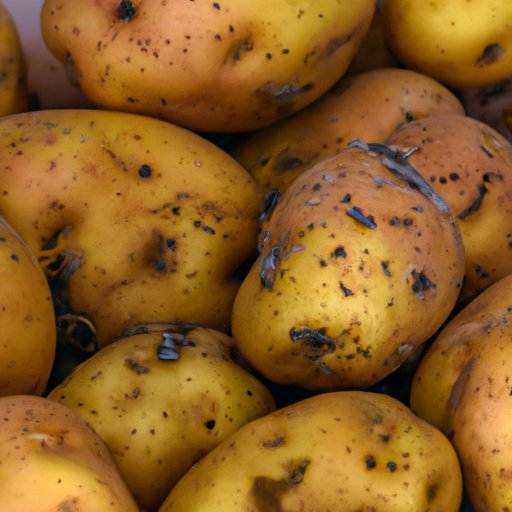
Introduction
Potatoes are a staple in many households, and they are often bought and stored in bulk. However, storing potatoes for long periods can result in spoilage, and eating bad potatoes can make you sick. Therefore, it is important to know how to detect signs of spoilage to avoid health risks.
Signs of Spoilage
Potatoes can turn bad due to mold, discoloration, or rotting. When potatoes get moldy, they appear mushy, slimy, and smelly. Likewise, discoloration indicates that the potatoes have started to decay. The appearance of rotting potatoes is marked by dark spots, pitting, and fissures. These signs can indicate if potatoes have started to spoil.
However, it is important to note that sometimes, potatoes can look and feel perfectly fine on the outside but have already started to spoil on the inside. Therefore, another test on how to detect spoilage in potatoes is by smelling them.
Smell Test
Spoiled potatoes have an unmistakable scent that is different from fresh potatoes. To conduct a smell test, smell the potato, and if it has a sour or musty scent, then it has already gone bad. However, the fraction of potatoes that are unsuitable for consumption is small. Most potatoes only develop minor flaws, so if it smells or feels fine, there is a high chance it is okay to eat.
Touch Test
The best way to pick good potatoes is to choose them by feel. Good potatoes are firm and have no soft spots. To detect bad potatoes, press your thumb against the potato and notice if it gives slightly or not at all. If the potato feels firm, then it is good to eat.
When storing potatoes, it’s essential to keep them in a cool and dry place. It is also essential to avoid storing potatoes alongside fruits. Fruits produce ethylene, which can lead to early ripening and spoilage of potatoes.
It’s worth mentioning that storing potatoes in the refrigerator is not advisable as the cold temperature converts the starch of potatoes into sugar, making it prone to discoloration and an unpalatable sweet taste.
Look for Sprouts
The appearance of sprouts is a clear indication that potatoes are starting to spoil. Sprouts signify that the potato is starting to eat up the nutrients on the inside to grow. Even though it’s possible to eat potatoes with small sprouts, it is advisable to avoid them as much as possible. The growth of sprouts is a sign that the potato has undergone significant changes, and when these changes become noticeable, they lose nutritional value.
Soft or Squishy Potatoes
Squishy potatoes with soft spots are a clear indication of spoilage and, in severe cases, rotting. To avoid such potatoes, choose firm and fully developed potatoes, which are less likely to turn bad quickly.
Brushing off the Dirt
It’s essential to clean potatoes before storing or cooking them. Dirt is one of the reasons why potatoes turn bad quickly. Dirt can lead to dust and moisture on the potato’s surface, causing decay. To avoid this, brush off all the dirt before storing potatoes and clean them thoroughly before cooking.
Storage Matters
The key to storing potatoes is to keep them in a cool and dry spot. Sunshine and warmth encourage spoilage, so storing potatoes in a dark and cool part of the house ensures that they remain fresh for a long time. A pantry shelf or a cool, dry part of the cellar usually works.
Conclusion
Knowing how to detect bad potatoes is essential to ensure that you do not compromise on the quality of the food you consume. By following the above tips, you will avoid the health risks of consuming spoiled potatoes. Taking every precaution towards selecting, storing, and preparing potatoes will improve the longevity of your potatoes and ensure that they are safe for consumption.
As a final piece of advice, purchase only the number of potatoes you need. Don’t buy more than you can consume, as this can lead to spoilage and wastage of food and money.





